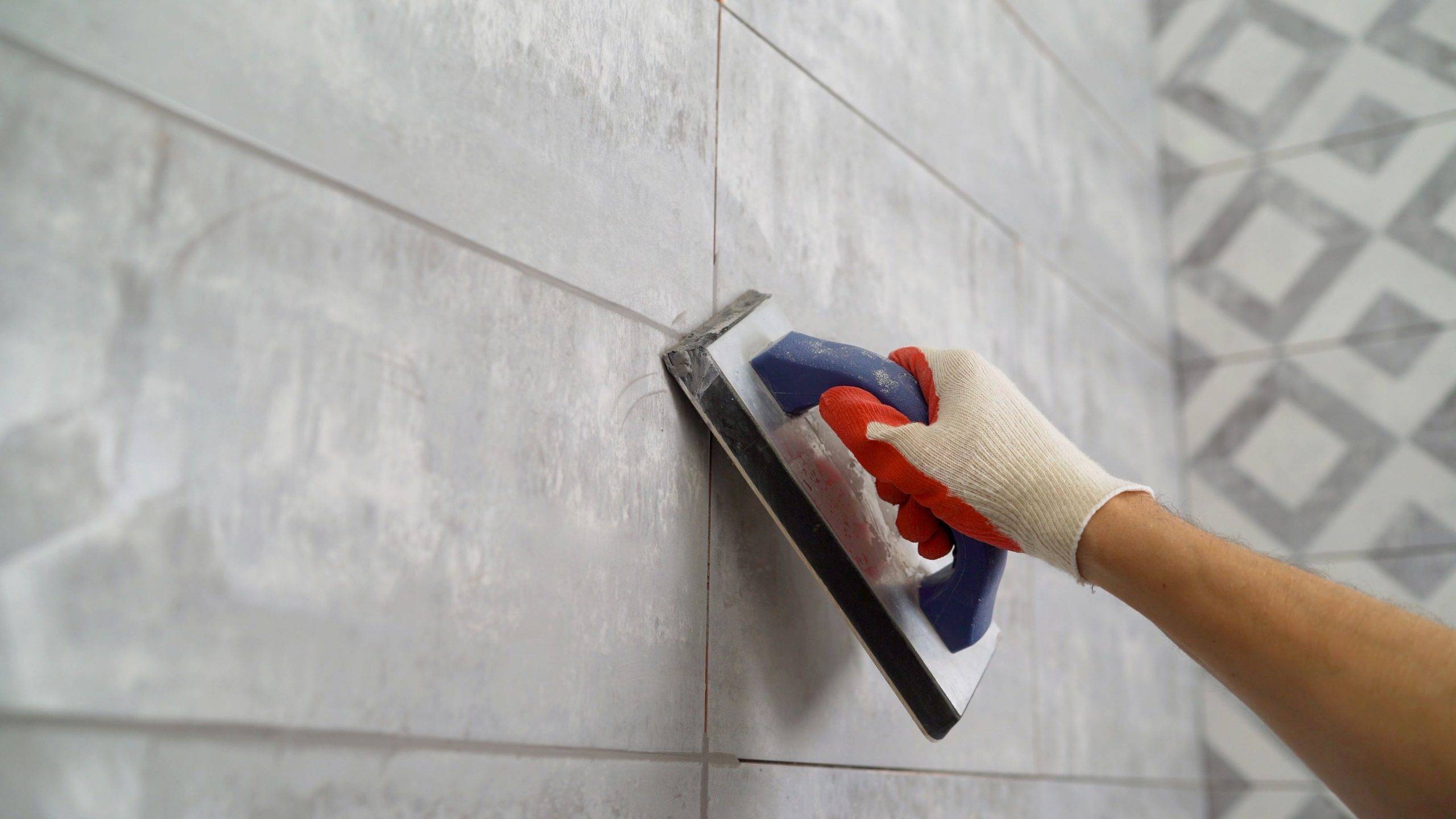
The Surprising Benefits of Regrouting Your Bathroom and Floor Tiles
Epoxy grout is resistant to cracking, shrinking, and discolouration, making it perfect for use in wet areas
Have you noticed that the grout lines on your bathroom or floor tiles look worn out, stained, or even moldy? If so, it’s time to consider regrouting. Regrouting is the process of removing old grout from between your tiles and replacing it with fresh new grout. It’s an important part of tile maintenance that can greatly improve the appearance and lifespan of your tiles.
Regrouting has many benefits beyond just looks. In fact, it’s a crucial step in tile maintenance. By regularly regrouting your tiles, you not only restore their appearance but also ensure their longevity and durability. This is especially important if you’re planning a larger renovation project like terrazzo restoration, where regrouting can serve as an excellent complementary process.
In this article, we’ll delve into the surprising benefits of regrouting for your bathroom and floor tiles. We’ll also provide helpful tips on how you can regrout on your own or hire professionals to do it for you.
Here are some of the topics we’ll cover:
By the end, you’ll understand why regular maintenance through regrouting is crucial for keeping your tiled spaces looking great and functioning well. Whether you’re intimidated by caulking or considering a more extensive renovation such as terrazzo restoration, our discussion on regrouting will give you insight into another option for refreshing your tiles.
Regrouting is the process of removing old, deteriorated grout from between tiles and replacing it with fresh, new grout. This not only helps maintain the tiles but also improves their appearance and extends their lifespan.
The first step in regrouting is to remove the existing grout without damaging the tiles.
Expert Tip: Take your time during this step to avoid any unnecessary damage to your tiles.
Once all the old grout is removed, it’s time to prepare both the tile surface and new grout for application.
While waiting for your tiles to dry, use this time to prepare your new grout mixture according to its specific instructions.
Helpful Hint: Make sure you mix enough grout for the entire area you’re working on to maintain consistency in color and texture across all grouted areas.
Now that everything is ready, you can start applying the new grout mixture onto your tiles.
Pro Tip: You may need to repeat the wiping process multiple times until all excess grout is removed.
The practice of regular regrouting helps in maintaining the aesthetic appeal of your patio and pool deck tiles, which can enhance not just the appearance but also add value to your property. For instance, if you have patio and pool deck tiles in Sydney, you can revitalize your outdoor space with expert cleaning services that bring a fresh shine to your outdoor haven.
Similarly, for indoor spaces, regrouting can breathe new life into marble, limestone, and travertine floors, restoring them to their original splendor. If you have such flooring in Sydney, you can benefit from marble floor polishing and travertine & limestone floor restoration services offered by professionals who specialize in elevating the elegance of these surfaces.
Remember, regrouting is not just about refreshing the look of your tiled surfaces; it’s also an essential maintenance routine that ensures durability, providing extended protection against wear and tear. Therefore, whether you’re dealing with outdoor patio tiles or indoor bathroom tiles
When it comes to tile maintenance, regrouting often gets overlooked. However, this process brings along a multitude of benefits that you may find surprising. From cosmetic enhancements to cost savings, the advantages of regrouting are worth considering. Let’s delve into these benefits in detail.
One of the most immediate and visually pleasing benefits of regrouting is the restoration of your tiles’ appearance. Over time, grout can accumulate dirt, develop stains, or discolor due to various factors such as moisture exposure and daily wear and tear. This can significantly dull the look of your bathroom or floor tiles.
Regrettably, no amount of scrubbing can restore the original color and shine of old grout. However, by removing the old grout and replacing it with new, you can instantly revive the look of your tiles. This process eliminates any embedded dirt, stubborn stains, and discoloration – giving your tiles a clean appearance and like-new surface.
For example, if your once bright white grout lines have turned brown or gray over time, regrouting will restore them back to their original fresh state. Think about how much brighter your bathroom or kitchen could look with sparkling clean grout lines!
To get an idea on how regrouting can transform the look of your tiles from dull to dazzling, check out some before-and-after photos from professional restoration services here.
Replacing worn-out or damaged tiles can be quite expensive when you factor in both material costs and labor charges. Regrouting presents a more affordable alternative for maintaining the good condition and aesthetics of your tiled surfaces.
By regrouting instead of replacing tiles entirely, you save on the costs of purchasing new tiles and the labor expenses involved in removing the old tiles and installing new ones. This can translate to significant savings, especially for larger areas or more expensive tile materials.
Old, damaged grout can harbor allergens like mold and mildew. These fungi thrive in damp environments such as bathrooms and kitchens, and they can pose health risks, particularly for people with allergies or respiratory issues.
By regrouting your tiles, you remove these potential health hazards from your living spaces. Fresh grout is also easier to clean and maintain, making it less likely for mold and mildew to build up again.
Properly maintained grout plays a crucial role in preserving the structural integrity of your tiles. It acts as a barrier that prevents water seepage which could lead to potential subfloor issues. Damaged or missing grout can expose the edges of tiles to moisture, leading to loosening or cracking over time.
Regularity in regrouting helps extend the life of your tiles by ensuring that they are well-protected from moisture damage. Besides, a well-maintained grout line greatly contributes to the overall aesthetic appeal of your tiled spaces.
In essence, regrouting is an essential part of tile maintenance that you shouldn’t overlook. It offers a range of benefits from restoring the appearance
When it comes to taking care of your home and making improvements, the cost is always a big factor. And when it comes to tiles, regrouting is a much more affordable option compared to replacing them entirely. Let’s take a closer look at why regrouting can save you money in both materials and labor.
Buying new tiles can be expensive, especially if you’re looking for high-quality or designer ones. On the other hand, the materials needed for regrouting, such as grout mix and sealants, are much cheaper. You can usually get these materials for a fraction of the cost of new tiles, making regrouting a financially smart choice.
Replacing tiles involves a lot of work and takes up a significant amount of time. It includes removing the old tiles, preparing the surface, laying down new tiles, and then waiting for them to set before grouting can even begin. Each of these steps requires labor hours that can quickly add up. Regrouting, however, skips several time-consuming steps. By focusing only on removing the old grout and applying new one, you greatly reduce the amount of time and effort needed for the job.
With regrouting, you get to keep your existing tiles while still giving them a fresh look and restoring their original condition. This process avoids the hassle and inconvenience of having to replace all your tiles. If there are specific areas with tile damage that regrouting can’t fix, such as chips or cracks, Swift Stone Chip and Crack Repair Solutions offer targeted repairs that seamlessly blend with your existing installation. These specialized services can work in tandem with regrouting efforts to refresh your space without the need for full-scale renovations.
Moreover, should your renovation desires extend beyond tiled areas to include concrete surfaces, professional services like Concrete Floor Polishing & Stone Care in Sydney are available to enhance your space’s overall aesthetic and durability through comprehensive stone cleaning and sealing techniques.
In summary, by choosing regrouting instead of tile replacement, you can save a significant amount of money while still improving the look and function of your tiled areas. These smart maintenance decisions not only protect the value of your home but also delay more extensive renovation projects until they are more practical or necessary.
When you think about regrouting, you might be focused on how it can improve the look of your tiled areas. But regrouting offers more than just cosmetic benefits. One of its most important advantages is its ability to create a healthier living space by getting rid of allergens.
Mold and mildew are the main causes of household allergens, especially in areas with high humidity like bathrooms. These unwelcome visitors tend to hide in cracked or porous grout lines, where they thrive and make the indoor air quality worse. Here’s how regrouting can help solve this problem:
Regrouting is an important part of maintaining your tiles. It not only makes them look new again but also plays a crucial role in creating a clean and healthy home environment. By specifically targeting areas where allergens tend to accumulate, regrouting shows that you’re taking proactive steps to ensure that everyone in your household can enjoy a comfortable and allergy-free living space.
Now that we’ve discussed how regrouting can help improve your health, let’s move on to the next section where we’ll explore its impact on the lifespan of your tiles.
When it comes to taking care of your tiles, grout plays a crucial role. It’s not just about the tiles themselves – grout is the unsung hero that holds everything together and keeps it strong.
Grout serves two important purposes:
When grout gets old or damaged, it loses its effectiveness and can lead to various issues:
Regular maintenance of grout is essential for ensuring the longevity and durability of your tiles. One effective way to do this is through regrouting – the process of replacing old or damaged grout with new, intact material.
Regrouting offers several benefits that contribute to increased durability:
While regrouting does improve the appearance of your tiles, its benefits go beyond just looks. It’s an essential part of home maintenance that:
Remember, regrouting is not just about appearances. It’s a crucial maintenance task that directly impacts how long your tiles will last and how well they’ll hold up over time.
Don’t forget to include regrouting in your regular home upkeep routine to keep your tiled surfaces in top condition.
In the next section, we’ll discuss the pros and cons of doing the regrouting yourself versus hiring a professional. Both options have their advantages, and the right choice depends on your situation and preferences.
When it comes to regrouting, there are two main paths you can take: Do-It-Yourself (DIY) or hiring a professional service. Each approach has its pros and cons, and the choice largely depends on your skill level, time constraints, and budget.
Engaging a reputable and experienced professional regrouting company offers several advantages that make it an attractive option for many homeowners.
Efficiency and Speed: A professional regrouting service has the right tools, skills, and experience to complete the job efficiently. With their expertise, they can often accomplish in hours what might take you days to do on your own.
Quality Results: Professionals understand the intricacies of the regrouting process. They know how to mix grout properly, ensuring a smooth application that enhances the appearance of your tiles. Plus, they have the knowledge to choose the right type of grout for specific tile materials and applications.
Reduced Risk of Damage: Tiles can be fragile, especially when trying to remove old grout without damaging them. A professional regrouting company is equipped to handle any challenges that may arise during the process, mitigating potential risks.
Warranty Assurance: Many professional services offer warranties on their work. This provides peace of mind knowing that if anything goes wrong with the grout within a certain timeframe, they’ll take care of it at no extra cost.
While hiring professionals may come with a higher upfront cost compared to DIY regrouting, these benefits often justify the investment. Here’s a handy list summarizing these benefits:
Embarking on a DIY regrouting adventure can feel like a daunting task. However, with the right information, tools, and techniques at hand, it is entirely possible to achieve professional-level results.
Before you dive into the process, there are a few key factors to consider:
Start by using a grout saw or a rotary tool equipped with a grout removal attachment to carefully remove the old grout. Be careful not to damage the tiles during this process.
Once you’ve removed the grout, clean the tile surface thoroughly using warm water and soap. This step ensures any residue is removed before applying new grout.
Follow package instructions to prepare your new grout mixture. It should have consistency similar to toothpaste – not too runny but easily spreadable.
Use a rubber grout float at an angle of approximately 45 degrees to evenly apply grout across the tile gaps. Make sure all spaces are filled without any air pockets.
Wait for about 15-20 minutes for the grout to set slightly, then use a damp sponge to wipe away the excess grout from the tile surface.
After 24 hours, when the grout has fully dried, apply a grout sealer for additional protection and longevity.
While DIY regrouting can be a rewarding project with significant cost savings, remember that professional services are available if you encounter any challenges. With careful planning and execution, you can rejuvenate your tiles and extend their lifespan.
Regrouting plays a significant role in tile maintenance. It not only improves the look of your bathroom and floor tiles but also makes them stronger and more functional.
Considering these advantages, regrouting is a cost-effective alternative to completely replacing your tiles. It allows you to keep your spaces attractive and in good condition without spending too much money.
Whether you decide to tackle the job yourself or hire professionals, knowing the process gives you the confidence to make the right choices for your home maintenance needs. We hope this detailed guide has helped you understand the unexpected benefits of regrouting your bathroom and floor tiles.
Remember, regular upkeep through regrouting is not just about appearances—it’s also about creating a safe and hygienic environment for yourself and your family. So, don’t hesitate to include regrouting as part of your home maintenance routine.

Epoxy grout is resistant to cracking, shrinking, and discolouration, making it perfect for use in wet areas

Epoxy grout is resistant to cracking, shrinking, and discolouration, making it perfect for use in wet areas

Epoxy grout is resistant to cracking, shrinking, and discolouration, making it perfect for use in wet areas